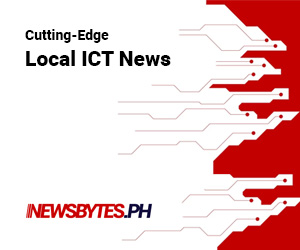To monitor and quickly assess water quality in Batangas, the Department of Science and Technology (DOST) unveiled a new initiative called Sentry or Sensing Environmental Parameters through Telemetry during the celebration of DOST IV-A?s 52nd anniversary in Mataasnakahoy, Batangas last Nov. 20.
Sentry is a system which deploys devices for real-time automated data acquisition to help avoid fish kill and other adverse effects of poor water quality.
These devices are sensors which come in the form of catamaran-type buoys. To be gathered are data on the water?s acidity, turbidity, and total suspended solids or particles larger than two microns.
The first of these sensors, launched during the said occasion, is installed along Lipote River which had fallen prey to water pollution coming from the upstream.
The sensor will serve as a virtual round-the-clock sentry that will stand guard over particles flowing from the upstream which will pollute the river.
These data will be transmitted, on a per hour basis, to a website which consolidates all other water quality information gathered from various monitoring agencies. Data-logging and communication technologies are provided by DOST?s Advanced Science and Technology Institute.
Among others, Sentry is also capable of warning concerned regulatory agencies if a particular data is nearing its critical level. It can also disseminate bulletins and advisories from the Department of Environment and Natural Resources (DENR), Bureau of Fisheries and Aquatic Resources (BFAR), and Environmental Management Bureau (EMB) to local government units (LGUs), fish cage owners and other stakeholders.
Sentry is an initiative of the regional offices of DOST, DENR, BFAR, and EMB, as well as Batangas State University which handled the design and fabrication of the buoys, Mataasnakahoy LGU, and Pusod Inc. ? an organization devoted to the protection and enhancement of ecosystems in the Philippines.
During the launch, DOST undersecretary for scientific and technological services Dr. Rowena Cristina L. Guevara lauded Sentry as a collaborative project, calling it as an illustration of ?bayanihan in science and technology.?
?This is what they call the tri-sector approach,? said Guevara, referring to the participation of the public, private, and academe sectors in the project. ?When these three [sectors] join hands, we can go far,? she added.
Sentry will be replicated in other areas and rivers draining into Taal Lake, specifically polluted rivers and coastal villages, among others.




